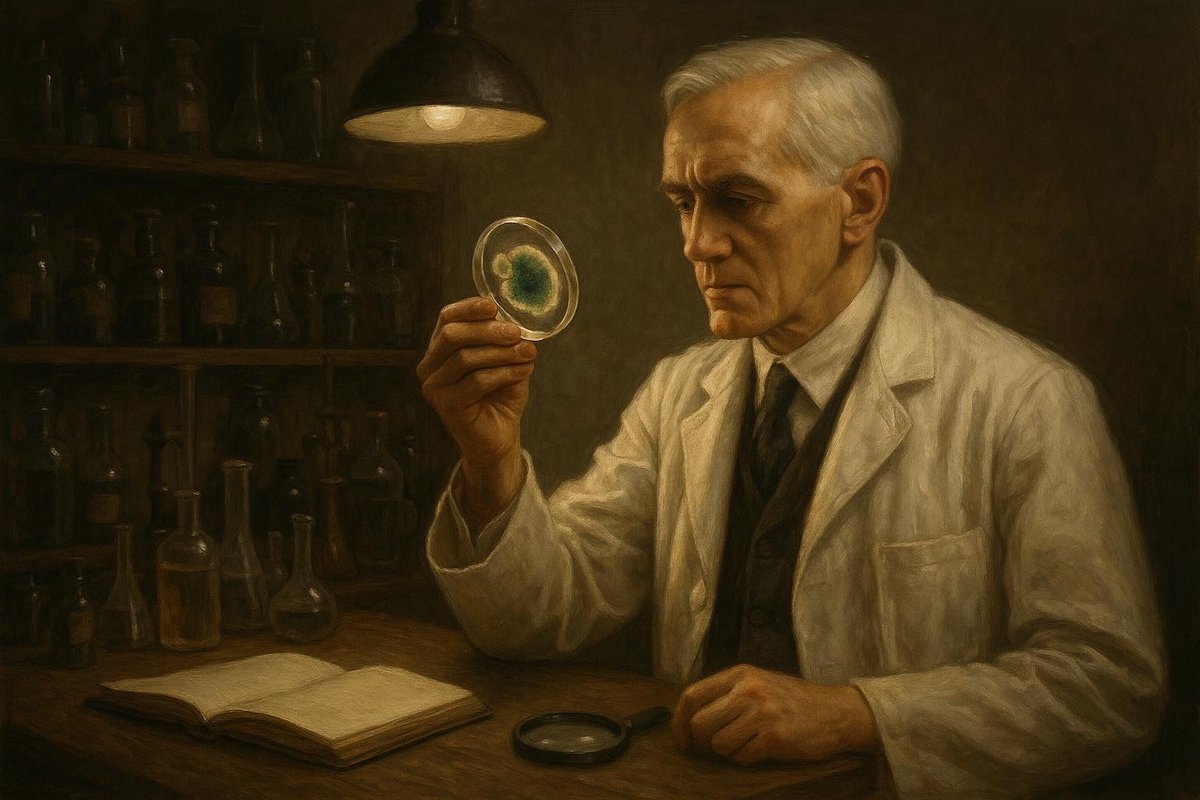
Origin: A Moldy Beginning
Imagine a laboratory in London, 1928. The air is thick with the scent of experiments gone awry, and Alexander Fleming, a bacteriologist, returns from a vacation to find a curious sight. Petri dishes covered in Staphylococcus bacteria are unexpectedly spoiled by a rogue mold. Interestingly, this common mold, Penicillium notatum, was more than a mere nuisance. It was the genesis of a revolution in medicine.
- Fleming noticed a clear zone around the mold where bacteria failed to grow.
- This observation sparked a curiosity that would eventually lead to penicillin.
- Before this discovery, bacterial infections were often life-threatening with few treatment options.
Before penicillin, humanity was largely at the mercy of bacterial infections. Doctors could do little more than watch as wounds festered and patients succumbed to sepsis. No wonder Fleming’s discovery was so significant. It was the dawn of a new era where medical practitioners could fight back with powerful antibiotics.
Key Figures: The Minds Behind the Magic
Of course, Alexander Fleming wasn’t the only hero in this scientific saga. After his initial discovery, further contributions were needed to transform this mold into a viable treatment. Howard Florey and Ernst Boris Chain, both scientists at Oxford University, played crucial roles. They methodically purified and tested penicillin, demonstrating its efficacy through experiments on mice and eventually humans.
- Fleming’s initial observation in 1928 paved the way, but it was Florey and Chain who developed practical applications.
- By 1940, their work showed promise in treating bacterial infections.
- Mass production of penicillin was essential to saving countless lives during World War II.
This collaboration between Fleming, Florey, and Chain exemplifies how scientific progress often requires multiple minds pooling their expertise, resources, and determination. They turned an accidental observation into a medical breakthrough, showcasing the power of teamwork in revolutionizing healthcare.
Turning Point: From Laboratory to Lifesaving Drug
The turning point came during World War II. Soldiers were falling victim to infections as much as to combat wounds. The demand for effective treatment was urgent. Leveraging the industrial power of the United States, mass production of penicillin became a reality. By June 1942, the drug was saving lives on the battlefield and beyond.
- Penicillin was initially so scarce that it had to be re-extracted from patients’ urine.
- By 1944, enough penicillin was produced to treat all Allied forces.
- The success of penicillin led to the development of other antibiotics, transforming medical treatment worldwide.
Imagine the relief of soldiers knowing that a small cut wouldn’t lead to a lethal infection. The transformation was nothing short of a scientific miracle, providing a new lease on life to millions. This was more than a medical advancement; it was a turning point in human history.
Impact on the World: A New Era of Medicine
The impact of penicillin cannot be overstated. It set the stage for the antibiotic era, drastically reducing mortality rates from bacterial infections. Hospitals and clinics worldwide began to stock this wonder drug, changing the course of treatment protocols forever.
- By the 1950s, penicillin use was widespread, saving countless lives from pneumonia, syphilis, and other infections.
- The development of penicillin opened doors for more antibiotics, expanding the arsenal against infectious diseases.
- Hospitals saw a dramatic decline in infection-related deaths, reshaping medical practices.
As time goes on, the legacy of penicillin continues. It not only changed the landscape of medicine but also spurred ongoing research and innovation in drug development. It’s a poignant reminder of how a single, accidental discovery can alter the trajectory of human health and well-being.
The story of penicillin is a vivid example of serendipity meeting scientific rigor. Fleming’s keen eye and the meticulous work of Florey and Chain turned a chance encounter with mold into a medical revolution. This discovery not only saved lives but also inspired future generations of scientists.
Fuel Someone Else’s Curiosity
If this story piqued your interest, share it with others who love tales of scientific discovery. Who knows, your sharing might inspire the next great breakthrough. Let’s keep the curiosity alive and celebrate the spirit of exploration and innovation together!

Leave a Reply